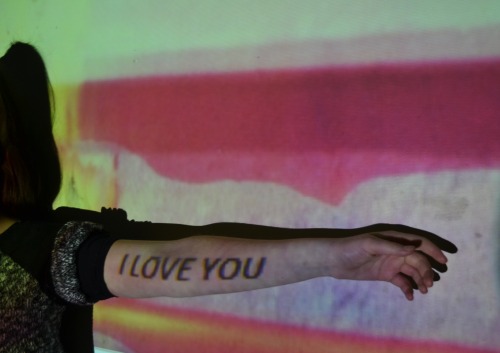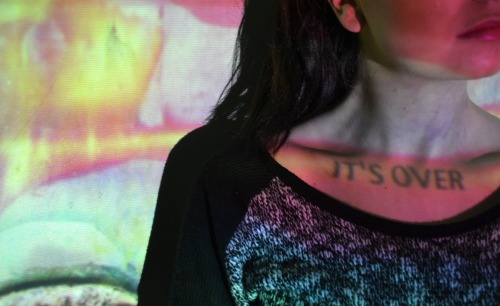Ng-liusaidh - NG


More Posts from Ng-liusaidh and Others

via weheartit





















Marvel Cinematic Universe title cards as of April 27th, 2018

Envía y recibe una pregunta II
1. ¿Te muerdes las uñas?
2. ¿Qué película te hace llorar?
3. ¿Con qué libro te mantendrías despierto (a) toda la noche?
4. ¿Alguna vez te has escapado de casa a escondidas? Cuenta tu anécdota.
5. ¿Por qué decidiste crear un blog en Tumblr?, ¿hace cuánto tiempo lo hiciste?
6. ¿Te ha ocurrido algo bochornoso o cómico mientras tenías relaciones sexuales?
7. ¿Última mentira que dijiste (o que recuerdes haber dicho)?
8. ¿Coleccionas algo?
9. ¿Eres seguidor de alguna serie de Netflix? ¿De cuál?
10. ¿A quién admiras?
11. ¿Con qué persona has perdido el contacto?
12. ¿Cuál es tu prenda de vestir favorita?
13. Si un genio de la lámpara te concediera tres deseos, ¿cuáles serían los tuyos? (No es válido pedir otros tres).
14. ¿Cuál es tu película de princesas Disney favorita?
15. ¿Alguna vez has robado algo, por más pequeño que sea? ¿Qué fue?
16. ¿Qué te obsesiona?
17. ¿Estudias o trabajas?
18. ¿Qué es lo más duro que te han dicho?
19. ¿Alguna anécdota vergonzosa?
20. ¿Cuántas relaciones amorosas has tenido?
21. ¿Último puesto de trabajo en el que te verías?
22. ¿A quién extrañas?
23. ¿Qué te impide escribirle o buscarlo (a)?
24. ¿Cita favorita?
25. ¿Cuál es el mejor momento para escuchar música?
26. ¿Qué canción (es) te han dedicado?
27. ¿Tienes algún plan para San Valentín?
28. ¿Qué te quita el sueño?

‘Proprioception’ is the sense of your own body; the understanding of the position of your limbs relative to each other. You can investigate, and fiddle with, this sense with these simple illusions.
1 - Rubber hand illusion

This is a classic experiment to trick your sense of self. Sit someone down with a stuffed rubber glove in front of them, and their actual hand hidden from view. Stroke both the rubber hand and real hand for about a minute, and they should start to feel like the rubber hand is theirs! Test if it’s worked by slamming down on the fake hand.
2 - Working in a mirror

Have you ever tried this? Looking only in a mirror (block your direct view of your hand), try writing your name. Pretty disorientating when your sight doesn’t match what you feel, right?
3 - Extra finger

Try this to give someone the sensation of having six fingers! Set up the participant in front of a mirror like this, and ask them to look at their hand in the mirror. Stroke their fingers, one by one, from the knuckle to the fingernail, on matching digits of each hand, counting each finger as you go. Repeat it again, but this time, on the concealed hand stroke the inside of the little finger on ‘5’, and then add a sixth stroke, stroking top of the concealed hand’s little finger and thin air next to the visible hand. They should feel like they have a sixth digit!

4 - Double nose

This is a simple one, showing the confusion that can be caused when different parts of our bodies feel different things. Cross your fingers like this, and stroke them across your nose. Because the outside edge of your fingers are touching the nose, it might feel like you have two noses!
5 - Confused fingers

Have your participant stick their arms out, cross them over, interlink and pull them towards themselevs, like this. Then, point at a particular finger - they’ll find it hard to move the finger you pointed at because of the tangle.
6 - Cutaneous rabbit

Test how closely we can feel sensations. Get someone to stick their arm out, then tap them like this: four times at the wrist, 3 times at the elbow, and twice higher up. If you do it consistently, they might feel like the taps were all equally spaced up the arm, not in three distinct spots!
7 - Through the floor

This will give the impression that your arms are sinking through the floor. Get your participant to lie down on the floor with their arms straight out and eyes closed. Pull their arms by the wrists and hold them up for about a minute, then very slowly lower them back to the floor. As you slowly drop them, ask what they feel.
8 - Heavy boxes

Get two boxes that weigh about the same, but are different sizes, and put the same weight in each one. Ask people which is the heavier box. They’ll tend to guess the smaller one, although they actually weigh the same, because their expectation is that the small one should be lighter, so their perception of it’s surprising weight is exaggerated.
Combined, these make a brilliant psychology activity to try with your kids (or, well, anyone!). Get full instructions here.

Made a little puppaccino for my Kofi
Ser flaca no es ser linda. Meter el pito no es coger. Fecundar el óvulo no es ser padre. Parir no es ser madre. Un título no es inteligencia.







A human brain has around 86 billion neurons, and the communication between these neurons are constant. The sheer scale of these interactions mean a computer (an EEG) can register this electrical activity, with different frequencies indicating different mental states.
Sources
-
 angelmelancolico reblogged this · 1 month ago
angelmelancolico reblogged this · 1 month ago -
 kate-elizabeth reblogged this · 1 month ago
kate-elizabeth reblogged this · 1 month ago -
 evildilf2 liked this · 3 months ago
evildilf2 liked this · 3 months ago -
 burnegoburn liked this · 3 months ago
burnegoburn liked this · 3 months ago -
 caseyykinssjourney liked this · 3 months ago
caseyykinssjourney liked this · 3 months ago -
 halo--hall reblogged this · 3 months ago
halo--hall reblogged this · 3 months ago -
 fauxkisu liked this · 4 months ago
fauxkisu liked this · 4 months ago -
 gnckkbrx reblogged this · 4 months ago
gnckkbrx reblogged this · 4 months ago -
 gnckkbrx liked this · 4 months ago
gnckkbrx liked this · 4 months ago -
 nic0las-caged liked this · 4 months ago
nic0las-caged liked this · 4 months ago -
 bl00dycocainnee reblogged this · 4 months ago
bl00dycocainnee reblogged this · 4 months ago -
 vylowxd1 liked this · 4 months ago
vylowxd1 liked this · 4 months ago -
 fleshmess liked this · 4 months ago
fleshmess liked this · 4 months ago -
 rotvn reblogged this · 4 months ago
rotvn reblogged this · 4 months ago -
 rotvn liked this · 4 months ago
rotvn liked this · 4 months ago -
 justbreathe-imthecaptainofmysoul reblogged this · 4 months ago
justbreathe-imthecaptainofmysoul reblogged this · 4 months ago -
 justbreathe-imthecaptainofmysoul liked this · 4 months ago
justbreathe-imthecaptainofmysoul liked this · 4 months ago -
 lezbcest liked this · 4 months ago
lezbcest liked this · 4 months ago -
 lezbcest reblogged this · 4 months ago
lezbcest reblogged this · 4 months ago -
 cloudyinalaska liked this · 4 months ago
cloudyinalaska liked this · 4 months ago -
 4gottenname reblogged this · 4 months ago
4gottenname reblogged this · 4 months ago -
 4gottenname liked this · 4 months ago
4gottenname liked this · 4 months ago -
 b4kafterijay reblogged this · 5 months ago
b4kafterijay reblogged this · 5 months ago -
 anna4sie2 liked this · 5 months ago
anna4sie2 liked this · 5 months ago -
 wordsinstrangeplaces reblogged this · 5 months ago
wordsinstrangeplaces reblogged this · 5 months ago -
 helloimscared reblogged this · 7 months ago
helloimscared reblogged this · 7 months ago -
 tinyparalleluniverse liked this · 8 months ago
tinyparalleluniverse liked this · 8 months ago -
 hit-these-lights reblogged this · 8 months ago
hit-these-lights reblogged this · 8 months ago -
 sha1na reblogged this · 8 months ago
sha1na reblogged this · 8 months ago -
 sha1na liked this · 8 months ago
sha1na liked this · 8 months ago -
 morenasoraya liked this · 8 months ago
morenasoraya liked this · 8 months ago -
 mooninhead liked this · 8 months ago
mooninhead liked this · 8 months ago -
 l0ve-is-a-dog-from-hell reblogged this · 8 months ago
l0ve-is-a-dog-from-hell reblogged this · 8 months ago -
 raveneye13 liked this · 8 months ago
raveneye13 liked this · 8 months ago -
 bribbledoodlejams liked this · 8 months ago
bribbledoodlejams liked this · 8 months ago -
 cobrakaia reblogged this · 8 months ago
cobrakaia reblogged this · 8 months ago -
 basementghostli liked this · 8 months ago
basementghostli liked this · 8 months ago -
 carlorosebud liked this · 8 months ago
carlorosebud liked this · 8 months ago -
 nofuckinlabels reblogged this · 8 months ago
nofuckinlabels reblogged this · 8 months ago -
 klmnnjisback liked this · 8 months ago
klmnnjisback liked this · 8 months ago -
 dark90secret reblogged this · 8 months ago
dark90secret reblogged this · 8 months ago -
 dark90secret liked this · 8 months ago
dark90secret liked this · 8 months ago -
 becauseheisinmydreams liked this · 8 months ago
becauseheisinmydreams liked this · 8 months ago -
 becauseheisinmydreams reblogged this · 8 months ago
becauseheisinmydreams reblogged this · 8 months ago -
 realive liked this · 8 months ago
realive liked this · 8 months ago -
 perc-sephone reblogged this · 8 months ago
perc-sephone reblogged this · 8 months ago -
 perc-sephone liked this · 8 months ago
perc-sephone liked this · 8 months ago